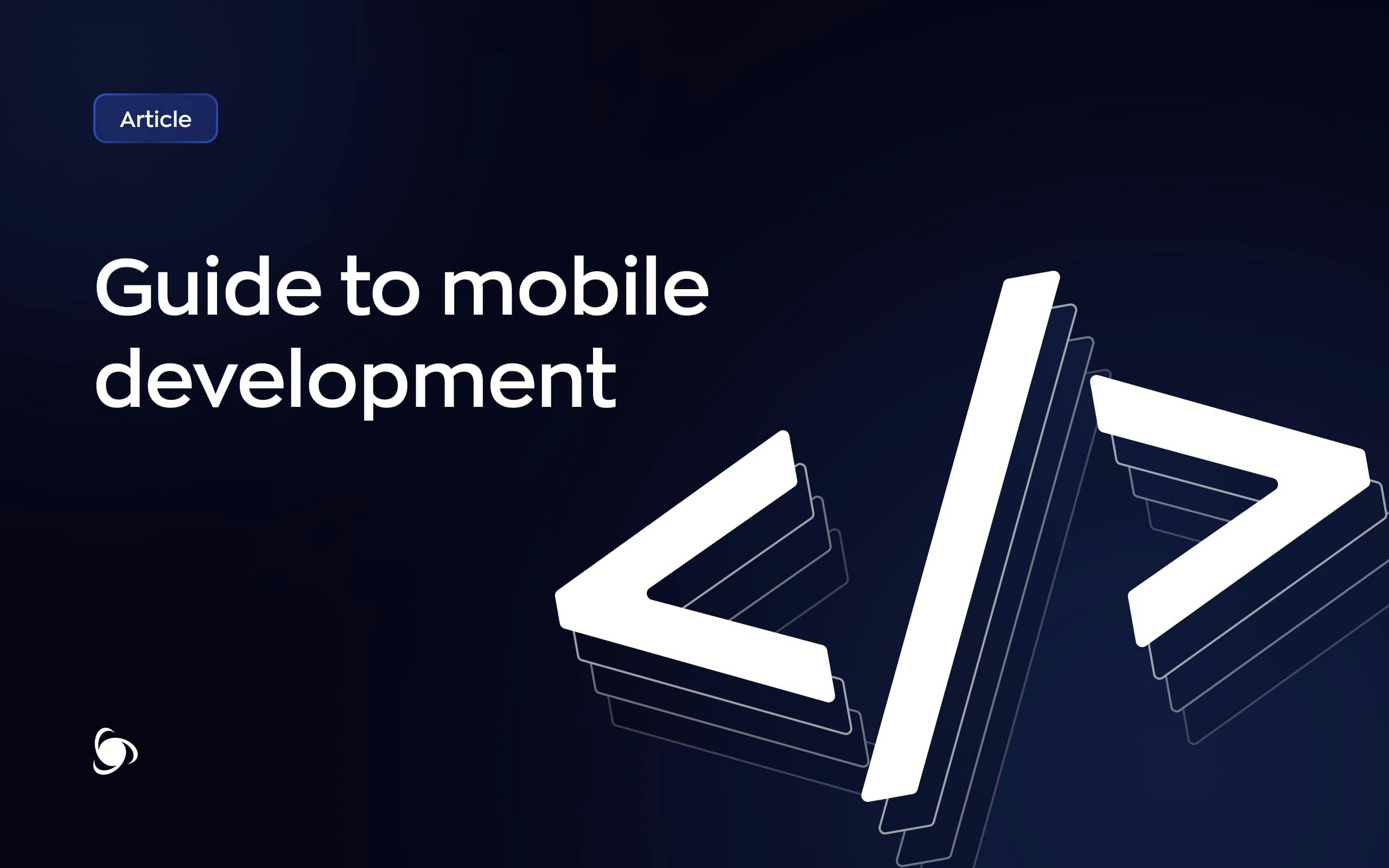Guide to mobile development
Mobile development is a promising, if not a dominating, approach to creating a digital product. The reason behind it is the wider availability of mobile devices in comparison to personal computers and laptops. Nowadays, more than 80% of the global population has a smartphone, which makes it impossible to ignore the mobile market when launching a digital product.
With the mobile market on the rise, more and more technologies are available to create your product. What tech stack should one choose? What should entrepreneurs take into account when shortlisting their development teams? Here’s our guide to mobile development with examples from our experience.
Hybrid and Native development
Although your business model may imply developing a mobile app only for only one or the other platform due to the target audience’s preferences or market characteristics, it’s common to develop an app available for both Android and iOS devices.
The two existing platforms require two different programming languages: it’s Swift for iOS and Kotlin for Android. Some kind of a single solution for both platforms was inevitable to appear as a way to save development resources. This development approach was called Hybrid as opposed to using the specific languages, native to every platform. Let’s dive into it and see what is the difference between Hybrid and Native mobile apps on two examples that will help you understand what development approach works better for your idea.
You’re launching a wellness industry app. It’s a diet log app offering a range of diets to follow and helping users achieve their weight loss or gaining goals by tracking calories intake. You run a wellness center and promote the app among other services that you provide. It’s safe to choose the Hybrid approach and save some money this way.
But if you plan to add some features that heavily rely on smartphone hardware – camera, accelerometer, Bluetooth, NFC – you may prefer going with the Native approach. For example, if you want the app to track the number of steps or connect to smartwatches, Native apps will work flawlessly. Hybrid apps perform worse because they are not built specifically for a particular platform. iOS and Android have different ways of working with smartphone hardware, which creates challenges for Hybrid apps.
The Native approach is the best option when the app has any features connected with the smartphone’s hardware or when the app handles big data sets, which affects its speed. In other cases, the Hybrid approach can help save development resources. Both are just tools that one can choose from based on the app features, budget constraints, and business purpose. Despite much debate, no approach is 100% better than the other.
How to choose tech stack for Hybrid approach
The Hybrid approach to mobile development has a range of frameworks to build your app with. Among the most popular ones are Ionic, ReactNative, and Flutter.
The choice depends on the business purpose of the app. For example, eCommerce apps that function as mere catalogs can benefit from using the Ionic framework. Such Ionic apps will provide a satisfying in-app experience and save the app owner some money on the development stage.
If you are launching something more complex than that, for example, an app with social media and chat features, it’s safer to go with ReactNative or Flutter instead of Ionic. From an app owner’s perspective, the difference between ReactNative and Flutter is that ReactNative is easier to maintain because it’s built on a more common language - JS and more teams work with ReactNative rather than Flutter.
See the table below comparing the Hybrid frameworks.
Low-code app alternative
There’s one more option for developing a mobile app, which suits only some business ideas. It’s called low-code development, and it’s an approach that helps you develop an app quicker by removing as much hand-coding as possible. You may know such low-code platforms as Microsoft PowerApps or Zoho Creator apps. One still has to know how to code, but it greatly reduces the time spent.
As you can guess, low-code development puts some restrictions on the features of the developed apps because developers can only create something that was pre-coded by the platform they are using.
However, some industries may benefit from this approach. For example, accounting and various record-keeping companies can create simple solutions for accounting purposes. These apps are very simple like Excel sheets but with a more convenient interface.
Do you need something other than that with more complex logic and rich in-app experience? Then these low-code platforms may not be a good fit for you.
Still unsure which way to go with your product development? Drop us a letter at hello@ronasit.com or contact us via our contact form here.

